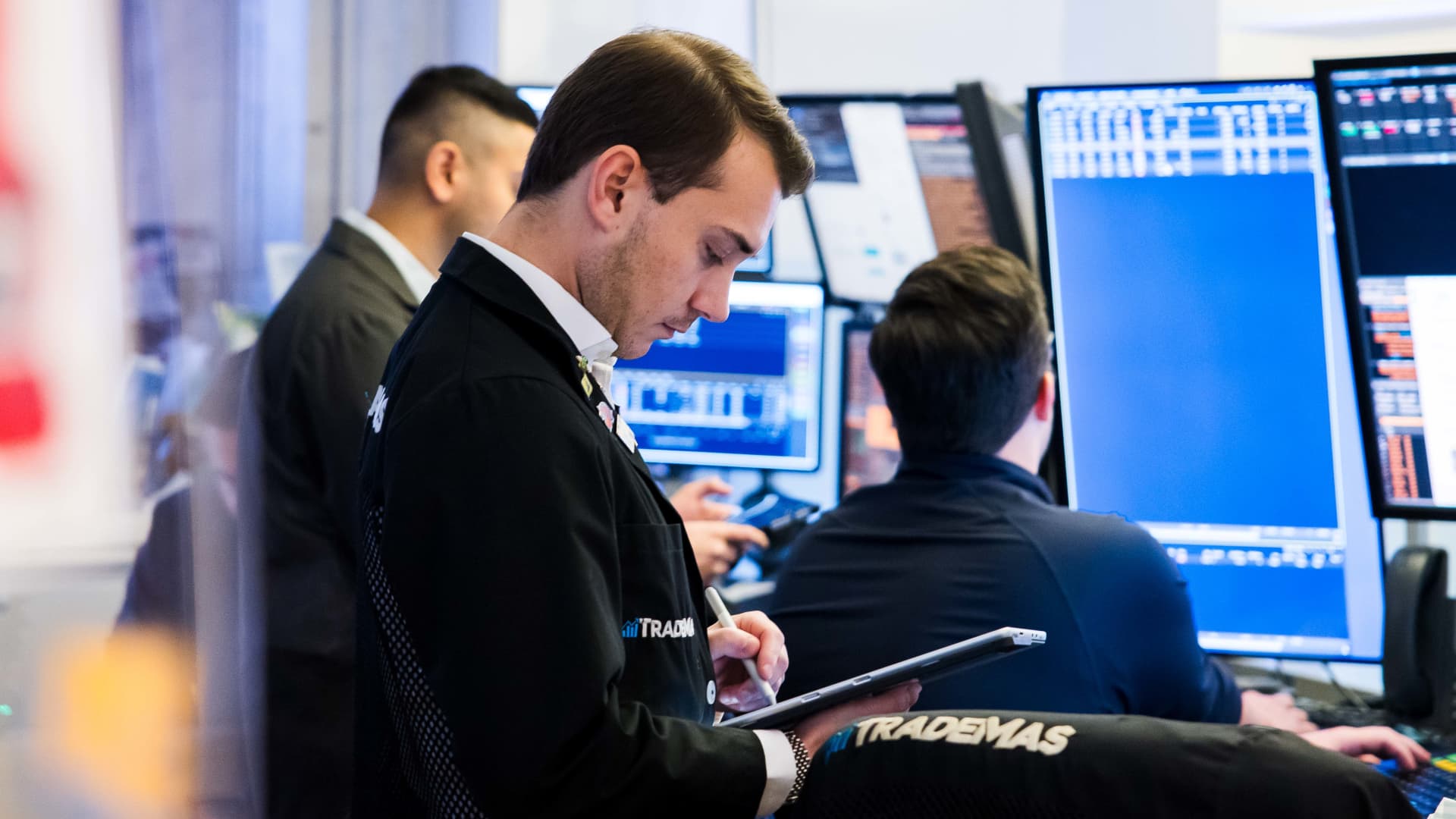The holiday season often inspires people to assemble lists of gifts they hope to receive. For investors, however, the holiday season brings a different sort of list. Investors can build a Christmas stock shopping list by selecting stocks with resilient growth, constructive price trends, and reasonable valuations. Options then give the investors a good way to bet on these stocks, while mitigating risk. I’ll review those trades lower in the article. A systematic and practical approach rarely tugs the heartstrings when identifying suitable gifts (try getting someone a new mop for the holidays if you doubt me). For this exercise, I screened mega cap stocks based on just three high-level factors, after which the list was refined to a relatively small number of companies. I did toss out a couple of companies on a discretionary basis that met the filters, but they were rejected as a “peremptory challenge” of sorts, such as Southwest Airlines (LUV) . Sorry LUV. Here were the filters I applied: (1) Year-over-year sales growth of at least 6%; (2) Trading above the 50-day moving average; (3) PEG ratio under 2. The largest companies tend to see revenue and earnings growth significantly outpace economic growth; therefore, large-cap indices generally experience sales growth of 5-6% per annum. If you’re going to pick your stocks yourself, you might as well exclude any companies that are not growing at least as fast as the revenues of the S & P 500 overall. Constructive price action is also helpful, and a stock trading below its 50-day moving average is not exhibiting momentum; therefore, any stock not above the 50-day moving average was excluded. Finally, some valuation metrics were applied to help avoid overpaying. Because valuation is a relative concept — we’ll happily pay a higher P/E for companies growing more quickly — I included only those companies with forward PEG ratios under 2. Here are the results by industry: Consumer & Digital Platforms: Structural Growth in Spending and Engagement Roku (ROKU) , Alphabet (GOOGL) , Amazon (AMZN) The digital-advertising and streaming economies continue to expand, even amid cyclical fluctuations. Roku remains a central operating system for connected TV, capturing a growing share of ad dollars as linear decline accelerates. Alphabet’s dominance in search, cloud, and digital advertising continues, supported by consistent mid-single-digit to low-double-digit revenue growth at massive scale. Amazon, meanwhile, maintains leadership across e-commerce, logistics, and cloud services, benefiting from accelerated AWS optimization and ongoing retail modernization. Travel, Leisure, and Lifestyle: Tailwinds from Re-Opening, Wealth Effects, and Consumer Preference Shifts Las Vegas Sands (LVS) , Planet Fitness (PLNT) , ON Holding (ONON) Las Vegas Sands’ Macau-centric rebound continues as visitation trends normalize and premium mass gaming stabilizes, driving meaningful YoY revenue growth. Planet Fitness benefits from a resilient “value fitness” model and consistent unit expansion, while ON Holding captures premium-athletic demand with expanding margins and global brand recognition. As an aside, there were more gifts of shoes and apparel under the tree last year from ON than any other brand, including Vuori (one of my wife’s favorites) and more than Lululemon, a perennial favorite in prior to 2023. Financials: Capital-Efficient Compounding at Reasonable Valuations Citigroup (C) , Nu Holdings (NU) Citigroup represents a contrarian value concept, characterized by global restructuring, capital returns, improved cost discipline, and compressed valuation multiples. The fact that the stock screens positively on revenue growth and trades above key moving averages suggests institutional investors are beginning to price in stabilization. Although it did not make the screening filters, I have also been kicking the tires on Wells Fargo (WFC) as their balance sheet is strong, and their historic growth rates were impeded by restrictions imposed on the company by regulators as a penalty for prior misbehavior (opening accounts for customers without their permission, for example). These restrictions inhibited aggressive lending practices, so they are arguably less exposed if the cracks in consumer credit prove to be worse than anticipated. Nu Holdings, by contrast, is a fast-growing fintech/digital financial services company. With more than 100 million customers across Latin America, NU delivers explosive revenue growth at attractive unit economics. I’m not quite as familiar with this business, but intrigued by its explosive growth rate and stellar margins; the street’s expectation is net income margins of ~ 21.5% for FY2026 Healthcare and Life Sciences: Innovation with Durable Economics Regeneron (REGN) , Globus Medical (GMED) , Eli Lilly (LLY) The healthcare sector continues to produce some of the market’s most durable compounders. Regeneron remains a leader in immunology and ophthalmology, while Globus Medical benefits from secular growth in medical devices, robotics, and minimally invasive surgery. Eli Lilly maintains one of the strongest pipelines in the world, with obesity and diabetes therapeutics reshaping pharmaceutical economics. Industrials and Infrastructure: Beneficiaries of Re-Shoring, Electrification, and the Infrastructure Cycle Comfort Systems (FIX) , Quanta Services (PWR) , Vertiv (VRT) Infrastructure spending has become one of the economy’s most durable multi-year trends. Comfort Systems benefits from non-residential HVAC demand, data center expansion, and industrial retrofits. Quanta Services is a critical beneficiary of grid modernization and electrification. Vertiv, meanwhile, is closely tied to the explosive growth of AI-driven data centers, providing thermal and power management solutions. Optical, Semiconductor, and Connectivity Technologies: The Backbone of the AI and Compute Cycle Lumentum (LITE) , Amphenol (APH) , Coherent (COHR) , Twilio (TWLO) , AMD (AMD) , Lam Research (LRCX) , Micron (MU) , NVIDIA (NVDA) , Western Digital (WDC) , SanDisk (SNDK) Few sectors exhibit secular growth as powerful as semiconductors, optics, and computing infrastructure. The screen captured a broad cohort: Lumentum and Coherent support optical networking, lasers, and photonics—critical components of AI-era connectivity. Amphenol, a world-class connector manufacturer, benefits from the increasing electronic content across various industries. Twilio screens due to a business-model transition toward profitability and value-oriented growth. AMD, NVIDIA, Micron, Lam Research, and Western Digital represent the core of the AI, memory, and logic cycle. SanDisk, integrated with Western Digital, reflects improving fundamentals in the storage market. That nearly half the screened list comes from the semiconductor and connectivity ecosystem underscores the strength of secular technology demand. It should be noted, however, that this is also a cyclical industry driven by chip prices. One might take smaller positions in each of these to avoid being overweight in the space should the pendulum swing the other way. Materials and Commodities: Strategic Exposure with Quality Balance Sheets Newmont (NEM) Newmont offers exposure to gold — a strategic asset class — while maintaining a production scale, operational diversity, and a disciplined cost structure. Gold prices have, most will have observed, appreciated much faster than the costs for miners in recent years. Easily observed in the relationship between gold and oil, for example. While many people spend December hunting for gifts, disciplined investors can use the season to review their portfolios and identify new opportunities. The companies highlighted—spanning technology, healthcare, financials, industrials, and commodities—represent a curated subset of large-cap stocks that combine growth, technical strength, and valuation discipline. If one were to assemble a holiday wish list for a future-focused, quantitatively grounded portfolio, this would be a compelling starting point. In the coming weeks, as the year draws to a close, we’ll highlight options strategies in one or perhaps a couple of the names on this list. The Trade From now through the end of the year, we’ll feature an options strategy on each of these (or possibly more than one), starting today with Roku, which has “returned to the scene of the crime,” a challenging level. The chart above combines a short January 85 put with a 105/120 1×2 call spread. Should the stock fall, the trader takes the risk of purchasing the stock at $85 less the .90 one collects to do the trade (just under 1% of the current stock price on a standstill basis). As the stock appreciates, one participates up to the short $120 strike, after which one’s profits decline to the upside breakeven of just under $136; one loses dollar-for-dollar above that. An important point: the trader is actually net short the stock (that’s 20% higher than the current stock price in just two months). Unwilling to take the risk of a short position? Simply trade a 1 up call spread risk reversal — selling only one of the January 120s instead of 2. DISCLOSURES: None. All opinions expressed by the CNBC Pro contributors are solely their opinions and do not reflect the opinions of CNBC, NBC UNIVERSAL, their parent company or affiliates, and may have been previously disseminated by them on television, radio, internet or another medium. THE ABOVE CONTENT IS SUBJECT TO OUR TERMS AND CONDITIONS AND PRIVACY POLICY . THIS CONTENT IS PROVIDED FOR INFORMATIONAL PURPOSES ONLY AND DOES NOT CONSITUTE FINANCIAL, INVESTMENT, TAX OR LEGAL ADVICE OR A RECOMMENDATION TO BUY ANY SECURITY OR OTHER FINANCIAL ASSET. THE CONTENT IS GENERAL IN NATURE AND DOES NOT REFLECT ANY INDIVIDUAL’S UNIQUE PERSONAL CIRCUMSTANCES. THE ABOVE CONTENT MIGHT NOT BE SUITABLE FOR YOUR PARTICULAR CIRCUMSTANCES. BEFORE MAKING ANY FINANCIAL DECISIONS, YOU SHOULD STRONGLY CONSIDER SEEKING ADVICE FROM YOUR OWN FINANCIAL OR INVESTMENT ADVISOR. Click here for the full disclaimer.





